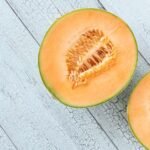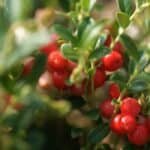To determine if a dragon fruit is ripe, you can follow these steps:
Look at the Fruit: A ripe dragon fruit has a bright, even-colored skin. If the fruit has a lot of dark blotches on the skin, similar to bruises on an apple, it may be overripe. A few spots, however, are normal.
Conversely, if the wings (leafy part extending off the fruit) are still colorful (ie red or yellow), that means the fruit is underripe and still needs more time to ripen.
Check the Texture: When ripe, the inside of a dragon fruit should appear juicy yet firm in texture, like a cross between a melon and a pear. Overripe dragon fruit will have brownish, mealy flesh that is similar to the bruised flesh of a banana, and you should not eat fruit that is brown or dried out.
Touch the Fruit: Only use this method if you are growing and harvesting your own dragon fruit. Squeezing a dragon fruit can leave the fruit bruised, which is inconsiderate to vendors and other customers in a store or market setting.
Harvest at the Right Time: If you grow your own dragon fruits, harvest your fruits at the right time to ensure ripeness. The fruit should come off the vine fairly easily with a light twist, and if it falls off the vine on its own, it is overripe.
Avoid Damaged Fruit: When buying dragon fruit, look for shiny, bright pink flesh on the outside with fresh green tips. Avoid dragon fruit skin that looks wrinkled, has blemishes, or brown coloring.
Remember, dragon fruit does not ripen once it is plucked, so it’s best to eat them as soon as possible.

![How to Tell if Snake Fruit is Ripe: A Guide for Fruit Enthusiasts [Steps] Close-up of the flesh of a durian fruit, showcasing its vibrant yellow color and unique texture, highlighting the fruit's reputation as one of the smelliest in the world.](https://ostrali.com/wp-content/uploads/2024/02/Ajg6O9Dn76E-150x150.jpg)










